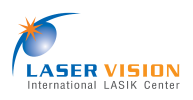Laser Vision
Sudden Angle-Closure Glaucoma: Symptoms and Risk Factors
Sudden Angle-Closure Glaucoma: Symptoms and Risk Factors
The term "sudden angle-closure glaucoma" itself conveys the abrupt onset of symptoms, including sudden eye redness, intense eye pain, and rapid vision impairment. This condition manifests suddenly, and understanding its underlying mechanisms is crucial.
Within the human eye, a delicate balance exists between clear and dense aqueous humor components, exerting pressure on the eye. Typically, this intraocular pressure measures between 10-20 millimeters of mercury. Aqueous humor flows in and out of the eye, maintaining a harmonious equilibrium with blood circulation. In cases of sudden angle-closure glaucoma, an anomalous shift disrupts this balance, leading to reduced outflow compared to inflow. This sudden disruption results in a rapid surge in intraocular pressure, potentially reaching levels as high as 50-60 millimeters of mercury, causing immediate and severe eye and head pain. The increased pressure induces haziness in the normally clear cornea, leading to sudden blurred vision.
This condition primarily affects individuals with an anatomically predisposed eye structure. Externally, their eyes may appear normal, but specific factors create internal abnormalities. For example, certain medications can contribute to this condition, and it is more prevalent in elderly women. As women age, changes in eye dimensions narrow the angle between the iris and cornea.
Symptoms In some cases, there are warning signs that precede the onset of sudden angle-closure glaucoma. These warning signs may include sporadic eye pain during eye strain, temporary evening eye haziness, or occasional halos around lights. However, these symptoms are intermittent, and rest often alleviates them. When these symptoms occur, especially in older individuals, particularly women, seeking immediate consultation with an eye specialist is essential. If the specialist identifies these symptoms alongside an internal eye structure anomaly, the use of laser therapy is highly effective in preventing this condition.
Risk Factors for Sudden Angle-Closure Glaucoma While the precise cause of sudden intraocular pressure increase may not always be clear, several factors heighten the risk of sudden angle-closure glaucoma:
Ethnic Background: Some ethnicities, such as Asians, have a higher susceptibility compared to Europeans.
Gender: Women are more affected by this condition than men.
Age: The risk escalates with age, particularly in individuals aged 60 and older.
Genetics: A family history of this disease suggests a genetic predisposition.
Eye Conditions: In most cases, sudden angle-closure glaucoma occurs abruptly without prior eye conditions. However, it can be linked to pre-existing eye conditions, such as mature cataracts that remain untreated or traumatic eye injuries causing lens displacement.
In summary, the primary symptoms of sudden angle-closure glaucoma encompass eye redness, severe eye pain, and blurred vision. These symptoms are considered medical emergencies, necessitating immediate attention. With a prompt diagnosis and treatment, patients can be discharged without hospitalization. Hence, individuals with risk factors should undergo regular eye check-ups, ideally on an annual basis.
Laser Vision
Is Glaucoma a Real Threat?
Is Glaucoma a Real Threat?
Glaucoma is a prevalent eye condition that poses a significant risk of permanent vision loss when left untreated or when treatment is inconsistent. It can lead to deteriorating eyesight, narrowing the field of vision, and, in extreme cases, total vision loss. Vision loss due to glaucoma is irreversible and cannot be restored.
What Is Glaucoma?
Many people may be familiar with cataracts, a condition where the eye lens becomes cloudy, much like frosted glass. Cataracts often develop with age, but they can also result from other causes, such as accidents or congenital factors. Cataracts affect the clarity of vision but are different from glaucoma, which arises due to elevated pressure within the eye and the degeneration of the optic nerve, leading to vision loss. When the pressure within the eye increases, it compresses the optic nerve, causing damage. Prolonged high pressure can result in vision loss. The loss of vision begins at the peripheral edges of the visual field, and if left untreated, it progresses, often affecting both eyes.
Symptoms of Glaucoma:
Glaucoma progresses slowly, and many patients do not exhibit symptoms in the early stages. Often, it is diagnosed as glaucoma without any noticeable pain or abnormalities, except in cases of acute glaucoma, which can cause sudden vision blurriness when exposed to bright light, eye pain, and headaches. Glaucoma can affect people of all ages, but certain groups are at a higher risk, including those over 60, individuals with a family history of glaucoma, diabetics, those with high blood pressure, and those with abnormal eye shapes, either short-sighted or long-sighted.
How Is Glaucoma Treated?
The treatment focuses on reducing intraocular pressure (IOP) by either decreasing the production of aqueous humor or increasing its drainage. Various methods can be employed, such as eye drops, oral medications, laser therapy, and surgery. The choice of treatment depends on the patient's condition and the type of glaucoma they have.
However, it is important to note that glaucoma treatment aims to halt the progression of the disease but cannot restore vision that has been lost. Therefore, prevention and early intervention are critical because glaucoma in its early stages often has no symptoms or warning signs, making regular eye examinations by a specialized ophthalmologist essential."
ဆေးရုံတည်နေရာ
Laser Vision International LASIK Center
49/5 Laser Vision Building, Ratchadaphisek 48 Alley, Ratchadaphisek Road, Ladyao Subdistrict, Chatujak District, Bangkok 10900, Thailand



